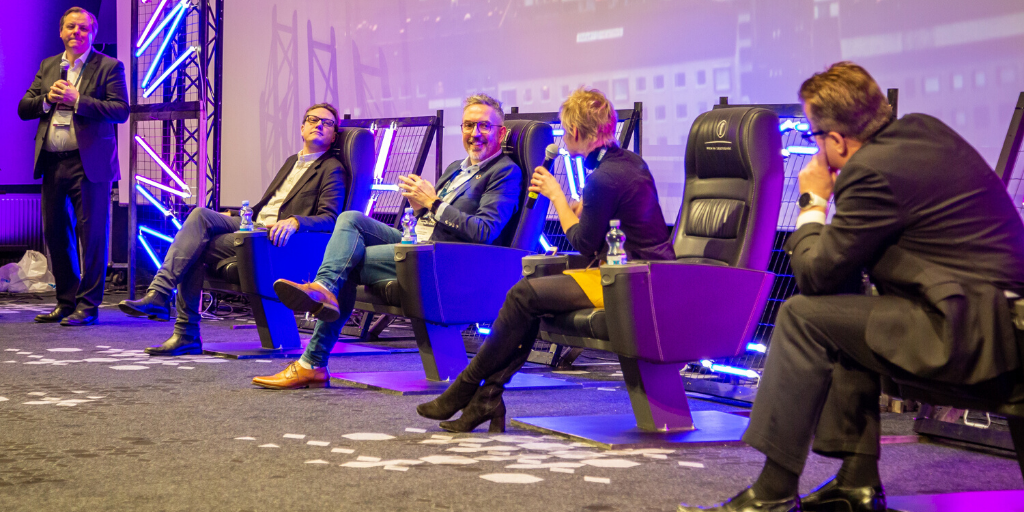The concept of smart city is changing towards a more citizen-centric approach. Smart City Mindtrek 2020 shared new ideas, solutions and visions at the end of January in Tampere, Finland.
110 speakers from tech companies, public sector, academia. Over 80 sessions, networking across industry borders, international attendance and Nordic smart cities especially well represented with their leading-edge expertise on all things smart.
That’s what made the Smart City Mindtrek 2020 International Conference & Business Expo a place to be and a topic to follow. As spoke Dr. Martin Brynskov in his opening keynote:
The world is looking to the Nordics, and to Tampere.
Brynskov described Smart City Mindtrek as one of those few places where it is possible to discuss the future: all the ideas of what’s going to happen in the next 10 or 20 years. It is a forum where visions can be shared in a spirit of honesty and collaboration.
Many of the Smart City Mindtrek sessions are traditionally more or less technology-oriented, but this year Tampere was pointing the smart city development to new directions. The rising theme is citizen participation in smart city design, simply: making citizens’ voices heard. It is also an efficient way to process smart city ideas into concrete actions, services and products that fulfil real needs.
When we build a smart city, we build it for the people, stated Teppo Rantanen, Executive Director of Growth, Innovation, and Competitiveness at the City of Tampere.
Citizens are in fact more and more in focus in smart city development all around the world. In an opening panel discussion it was made clear that smart cities are inherently co-creative and need smart solutions to allow and maintain citizen participation. Trust is also an issue here: the system for data ownership must be clear and fair in order to encourage people to offer their data for shared use.
In a changing world
The opening panel took a look at the future, the probable smart city themes in 20 or 30 years. For any Smart City Mindtrek goers in 2050s, here is a checklist:
- Collaboration is done in a virtual way. Many of those future guests will not come to Tampere but stay in their own cities and participate virtually.
- The nature of work is also going to change and work will not be a place anymore. There will be more entrepreneurs and self-employed people.
- While the above will probably be true, people will still want to meet each other in real life. The big issue is to create and keep a nice balance between human and digital interaction.
- Creativity is emphasised and people will have better access to high-quality knowledge.
- Cities will be self-sufficient and sustainable.
Technology is not just solutions, it is rewiring how the world is run. According to Brynskov in his keynote, that is the only way to leverage technologies to mitigate the crises the world is facing: economic, environmental, social.
Smart city and business
Smart cities enable smart business: new business models and internationally scalable smart city solutions that will help cities and citizens to benefit from the new technologies. The Open & Agile Smart Cities initiative (OASC) has over 140 member cities – a big market not to be underestimated. According to Brynskov, Chair of OASC, a company that can make a good smart city solution will find this global community quite interesting.
A good way to make changes happen is to cooperate: cities, businesses, academia, residents together – like it is already done in Finland.
To create global smart city market based on the needs of cities and communities, please world, copy the Finns and the 6Aika strategies, proposed Brynskov.
Cities need shared standards and declarations
Standards are also needed to create a smart city market. OASC is working to establish the Minimal Interoperability Mechanisms (MIMs), ready to use in any city. By implementing MIMs cities increase the speed and openness of innovation and development, allowing cities to engage in global digital transformation.
Sustainability is part of the digital transformation, and Brynskov had good news for the Smart City Mindtrek audience: there is an European declaration for upscaling digital solutions. Sign it and be a part of a massive market and the European way of digital transformation in cities and communities – and in a true Mindtrek spirit, too. The aim is to turn more cities and communities into smart and sustainable places where people enjoy living and working.
More than 60 EU, national, regional and city leaders – Tampere among them – signed the Join, boost, sustain declaration in Porto the very next day after Smart City Mindtrek 2020.
The article is based on thoughts and ideas from:
– International panel discussion: Smart Cities in a Changing World Panelists: Gunnar Edwin Crawford Head of Stavanger Smart City, Kaisa Spilling Development Manager, Forum Virium Helsinki , Teppo Rantanen Executive Director, Growth, Innovation, and Competitiveness of the City of Tampere, Pekka Sivonen, Director of Digital Transformation of Finnish Industries in Business Finland, Martin Brynskov, Chair of Open & Agile Smart Cities initiative (OASC)
– Keynote by Dr. Martin Brynskov “What Cities and Communities Need”.
Photo: Mirella Mellonmaa
